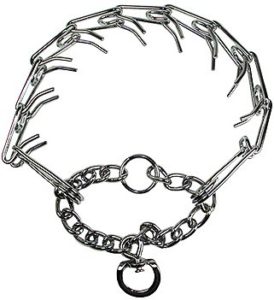THE TOP 10 MISTAKES DOG OWNERS MAKE
#5 Not Giving Appropriate Corrections
The 5th Biggest mistake Dog Owners Make is Not Giving Appropriate Corrections. First we need to discuss what an appropriate correction is. An appropriate correction is creating an unpleasant stimulus that the dog finds unpleasant enough that it does not want to continue its unwanted behavior. Corrections need to be consistent and it is important that you see your dog doing the behavior and you correct your dog as the unwanted behavior is happening. You have a half a second or less to correct your dog in the behavior, or your dog will not connect the dots that the correction is a result of your dog’s behavior. Also, corrections need to be repetitive. It takes time for your dog to realize that it is not an ok behavior the next time your dog engages in the unwanted behavior. So consistency and repetition are what is needed for your dog to learn. If you miss being able to correct your dog, your dog will probably never learn to stop the unwanted behavior, or at best take a very long time for your dog to understand. If your dog currently is displaying unwanted behavior when you can’t observe your dog, you have to crate train and crate your dog at times when you cannot observe your dog behaving badly until you have trained out the bad unwanted behavior.
Second we have to discuss what kinds of corrections work the best. There are only three types of corrections that might work.
- A Leash Correction
- A Verbal or Auditory Correction
- A Correction using an electronic collar (Low Level and Humane Stimulation)
For all three-correction types, your dog will determine the level of correction. You don’t determine the severity of the correction. You use the lowest level correction that your dog finds unpleasant enough to stop the bad behavior and not immediately start the bad behavior again. I will go through each type of correction in more detail.
TYPES OF CORRECTIONS
- Leash Corrections typically involve a Dog Training Prong Collar (designed and developed by a veterinarian,) so yes the tool is very humane when used properly. Our goal is not to cause fear and harsh punishment. Our goal is to create just enough discomfort as a consequence of your dog’s bad behavior where again your dog stops the unwanted behavior and does not immediately go back to engaging in the unwanted behavior. Choke chains, head halters, gentle leaders and flat buckle or snap collars are usually not safe to use as a correction collar, and we want your dog safe. The way to give an appropriate correction with a Dog Training Prong Collar is bases on the system of “pressure on…Pressure off.” You pull up on the leash and apply upward pressure, when your dog stops the behavior the pressure stops. You don’t give a correction by the old school “yank and crank” method of giving a sharp harsh correction. As I said earlier, your dog determines the level of pressure you need to use. Your dog determines the severity or level of correction in this case collar pressure. You start light and gradually increase collar pressure until your dog stops. If your dog immediately or quickly goes back into the bad behavior, that lets you know that the pressure was not high enough to be effective in teaching your dog and stopping the behavior. Leash corrections should be paired with a negative verbal marker (correction word.)
- Verbal or Auditory Corrections usually are ineffective. Now you might be asking, “then why are you listing it as an appropriate correction?” I’m glad you asked. First, when using a verbal or auditory correction by itself, you most likely have to scream or yell to stop your dog from the unwanted behavior. I don’t believe in yelling or screaming, and it rarely works unless you have a super fearful dog from the start. I don’t want to scare my dog because that only ruins my relationship with the dog. The verbal correction is associate 100% with me, or in your case, you. With a leash and collar correction the dog feels the correction on its neck, so your dog views the correction more with itself and its behavior. So why use a verbal or auditory correction at all? Well there is a great reason. The way to use a verbal or auditory correction is to pair the correction word, such as “OFF” or “NO,” with the physical correction. You pair both together at the same time so your dog associates the correction word with the physical correction. In time, you are then able to fade away the physical correction and just use the auditory correction alone. Your dog when conditioned through repetition will associate the verbal correction word with the leash correction. How do you know when that has happened? It is conditioned when you can use the auditory correction word alone without the leash correction. The usual time it takes is about 3-4 weeks of consistent pairing the word “OFF” or “NO” with the physical leash correction given the fact that you are using the right level of leash and collar pressure as described above. The real term science uses for the correction word is a “NEGATIVE VERBAL MARKER.” The correction word is a marker or a signal that your dog will get a physical correction when the correction word is spoken if your dog does not stop the behavior. To condition your dog with a negative verbal marker like “NO” or “OFF,” you need to say the word at the same time you give the leash and collar pressure or correction, or immediately right before the leash and collar correction.
e-Collar Technologies Best Electronic Training Collars
- A Correction using an electronic collar (Low Level and Humane Stimulation). There is more controversy and misinformation about electronic collars than just about anything in dog training. Electronic collars are probably one of the safest and most humane tools for giving a correction. Today’s electronic collars, at least the good ones from e-Collar Technologies, and Dogtra, have very sensitive and sophisticated rheostat dial settings that go from a level that is imperceptible to very low and mild, to more severe and high. As with leash corrections, your dog determines the level of the correction as talked about above. This tool like any other tool is only as good as the person using the tool. When a dog is punished harshly and severely it is the owner using the electronic collar too high not the electronic collar. The e-collars from e-Collar Technologies have the lowest level stimulation also they use a proprietary “BLUNT” stimulation technology, where the sensation does not sting or hurt. It feels like a Tap on the neck at the level you set. Obviously no dog should experience pain or fear in training. As a Harvard Educated Animal Behaviorist, and as a trainer over the last 35 years, I highly recommend e-Collar Technologies electronic collars for all my clients and their dogs. Now one note or caution and advice. I do not believe that most dog owners should use this tool without first being well educated and shown how to use an electronic collar. I want to make sure the electronic collar is used properly, humanely and not in a way that causes any fear or pain for the dog.
Dogs learn by corrections and rewards both and learn best when they are used properly together. Click next to learn about how to use food rewards properly. Call Phoenix Dog Training for help with any dog obedience training or puppy training now 602-769-1411
Like us on Facebook
|Home| |Phoenix Dog Training| |Puppy Training| |Phoenix Dog Trainer|Severe Behavior Problems |Phoenix Dog Behaviorist|Aggressive Dog Training| |Anxiety and Phobic Dog Training| |Service Dog Training| |About Phoenix Dog Training| |Phoenix Dog Trainer Reviews||Phoenix Dog Training Blog|Dog Training Services Valleywide|Glendale Dog Training|Scottsdale Dog Training |$50,000 Charity Dog Training Challenge |Contact Phoenix Dog Training|





